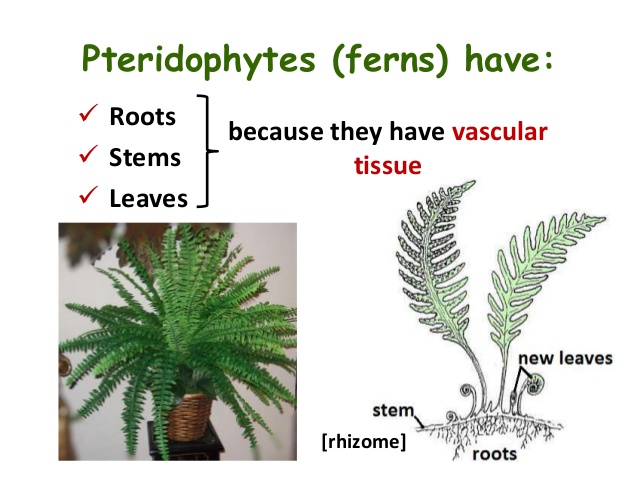Horsetails and ferns are pteridophytes. Pteridophytes members are very useful in medicinal aspects, soil binders, and ornamental purposes. These are the first terrestrial occupied plants to possess vascular tissues -xylem and phloem. These are found in cool, damp, shady places and some flourish in sandy-soil conditions.
Gametophytic plant body is the dominant phase in the life cycle bryophytes. But in pteridophytes, the main plant body is a sporophyte which is differentiated vascular tissues. The leaves in Pteridophyta are microphylls (large) as in ferns.

The sporophytes bear sporangia that are subtended by leaf-like appendages. These are called sporophylls. In few cases it may form a structure called strobili or cones (Selaginella, Equisetum), the sporangia produce spores by meiosis in spore mother cells. These spores are germinating to give rise to small, multicellular, free-living, photosynthetic thalloid gametophytes. This is called a prothallus. The gametophytes are growing in cool, damp, shady places. Therefore, pteridophytes distribution is limited to narrow geographical regions. The gametophytes bear male and female sex organs. They are antheridia and archegonia. Fusion of male and female gamete result in a zygote.
Transfer of antherozoids needs water. Pteridophytes which are having similar kinds of spores are called homosporous. But in Salvinia and Selaginella, they produce two kinds of spores(macro and micro) known as heterosporous.
The pteridophytes are classified into four classes:
- Psilopsida (Psilotum)
- Lycopsida (Selaginella, Lycopodium)
- Sphenopsida (Equisetum)
- Pteropsida (Dryopteris, Adiantum)
Subject: Biology (4253)
Important MCQs Based on Medical Entrance Examinations To Improve Your NEET Score
18000+ students are using NEETLab to improve their score. What about you?
Solve Previous Year MCQs, Mock Tests, Topicwise Practice Tests, Identify Weak Topics, Formula Flash cards and much more is available in NEETLab Android App to improve your NEET score.
Share this page with your friends

Leave a Reply